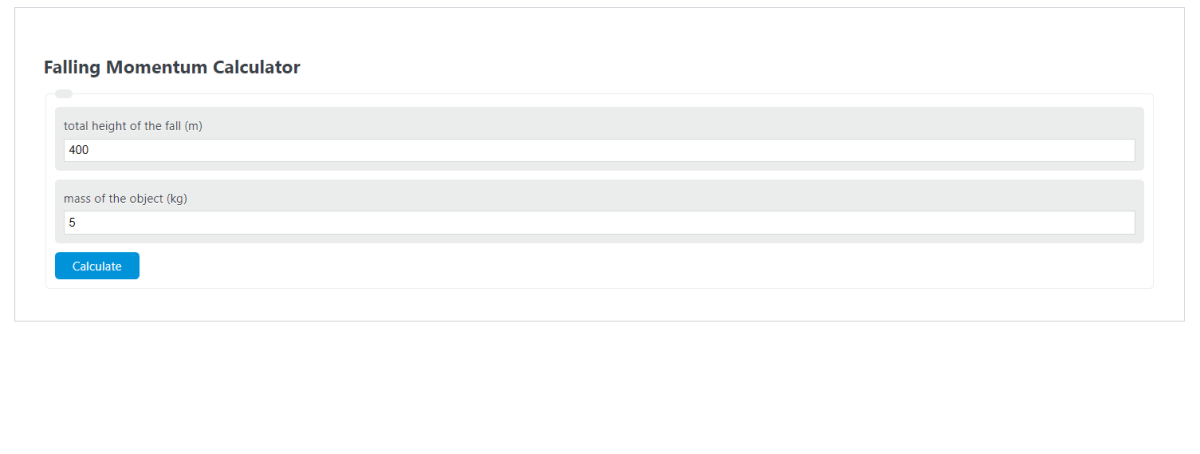Enter the total height of the fall and the mass of the object into the calculator to determine the Falling Momentum.
- All Momentum Calculators
- Vehicle Momentum Calculator
- Energy To Momentum Calculator
- Distance to Momentum Calculator
Falling Momentum Formula
The following equation is used to calculate the Falling Momentum.
p = SQRT (2*g*H) * m
- Where p is the Falling Momentum (kg*m/s)
- H is the total height of the fall (m)
- m is the mass of the object (kg)
- g is the acceleration due to gravity (9.81 m/s^2)
To calculate the falling momentum, take the square root of 2 times the gravity times the height, then multiply the result by the mass.
What are the units for Falling Momentum?
The most common units for Falling Momentum are kg*m/s.
How to Calculate Falling Momentum?
Example Problem:
The following example problem outlines the steps and information needed to calculate the Falling Momentum.
First, determine the total height of the fall. In this example, the total height of the fall is determined to be 400 (m).
Next, determine the mass of the object. For this problem, the mass of the object is measured to be 5 (kg).
Finally, calculate the Falling Momentum using the formula above:
p = SQRT (2*g*H) * m
Inserting the values from above and solving the equation with the imputed values gives:
p = SQRT (2*9.81*400) * 5 = 442.94 (kg*m/s)
